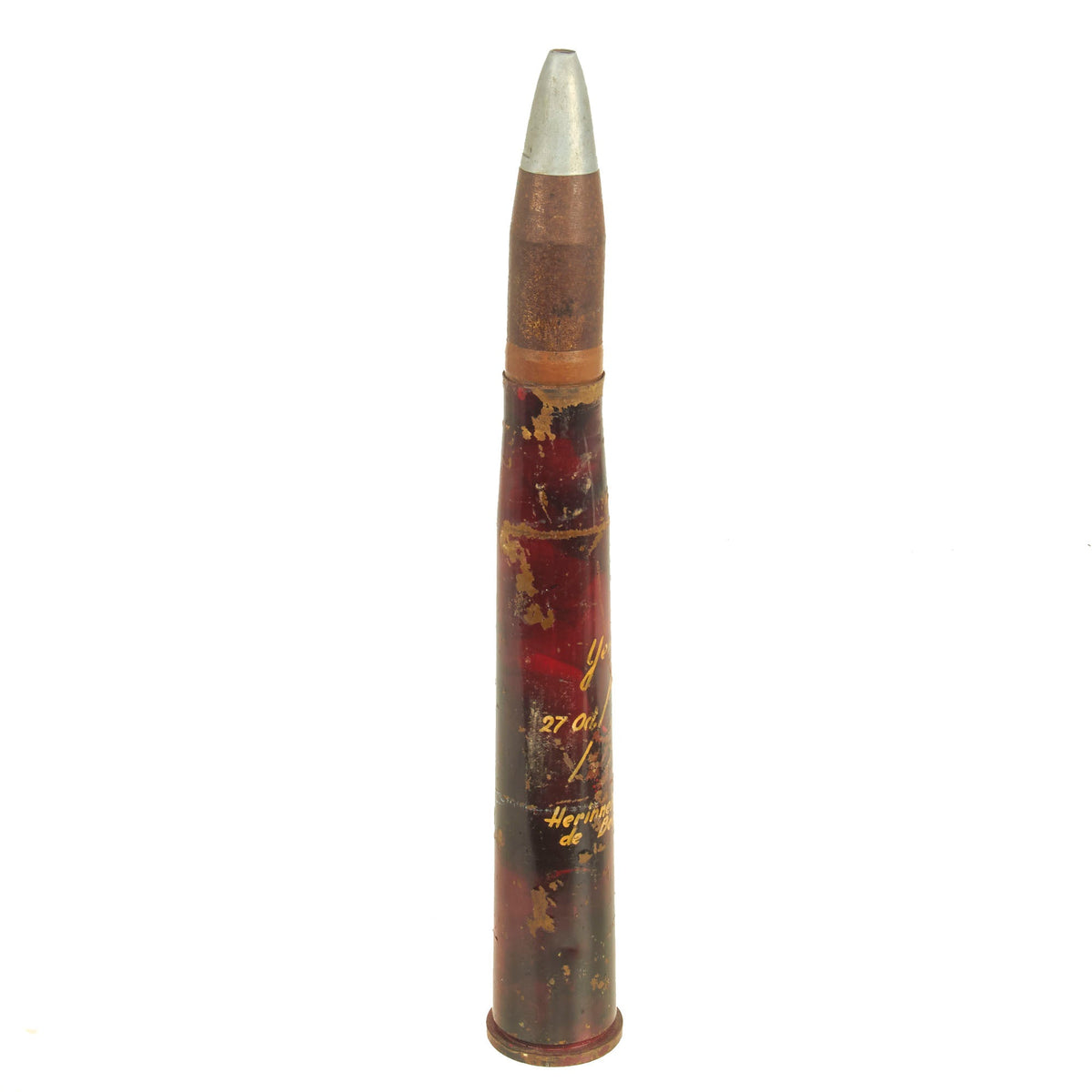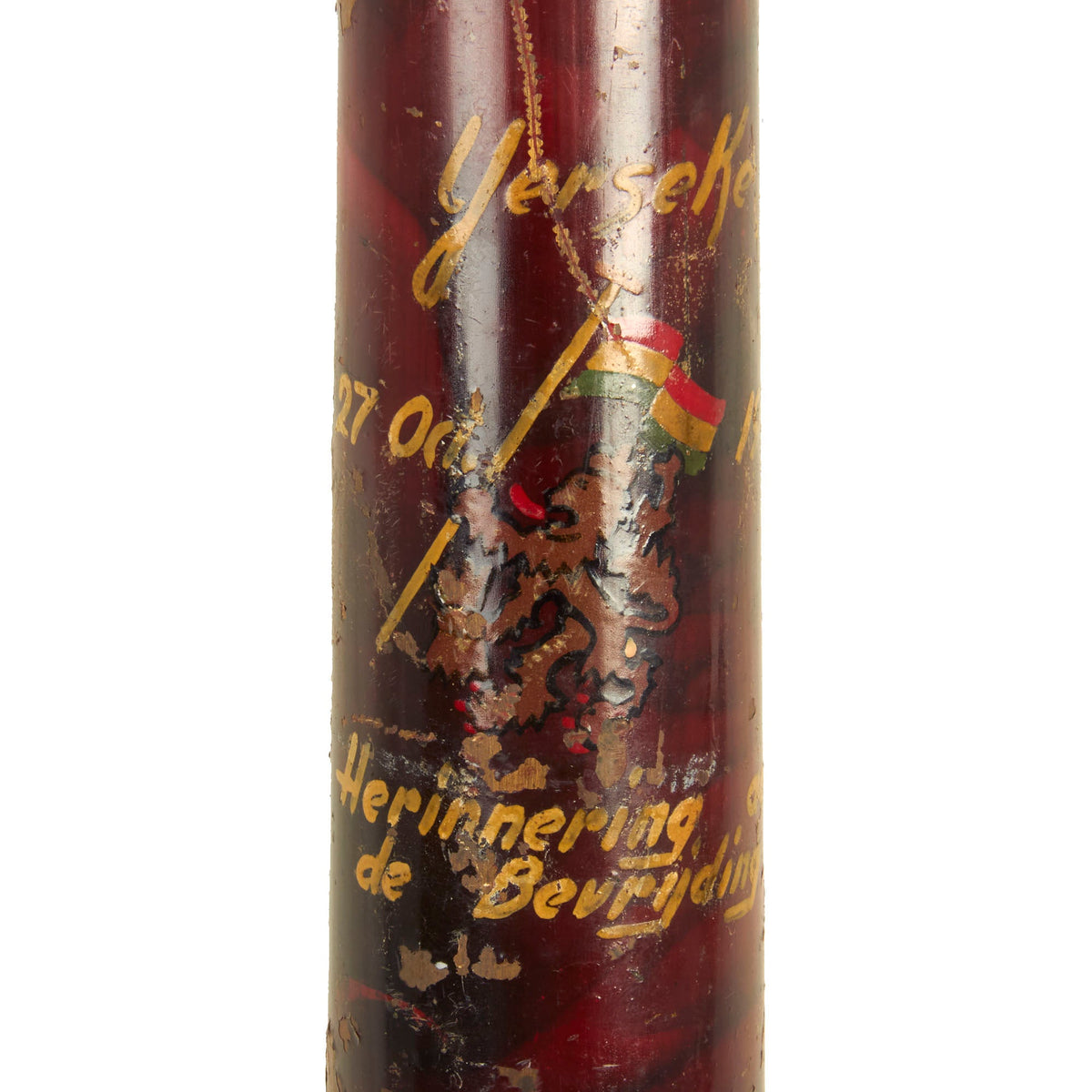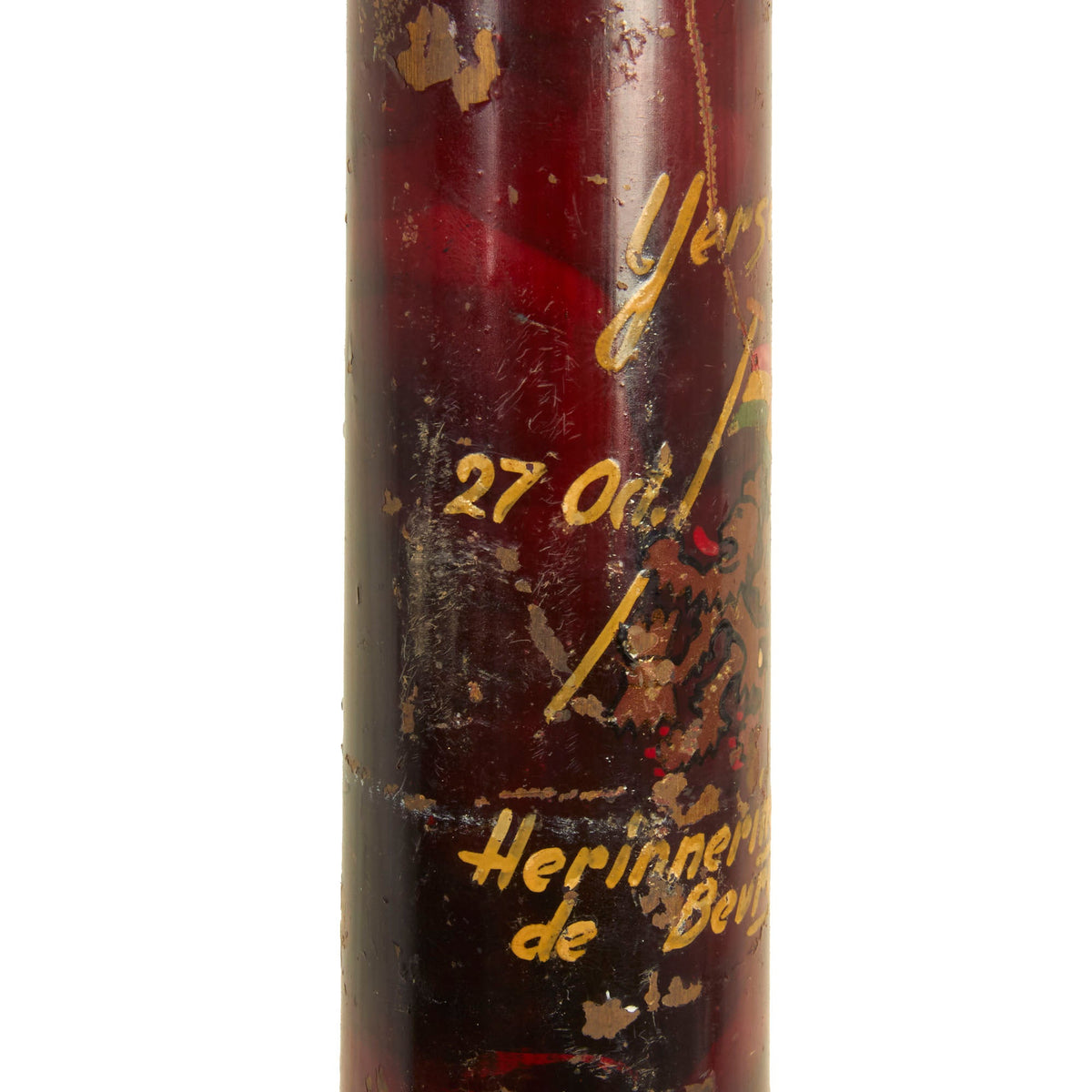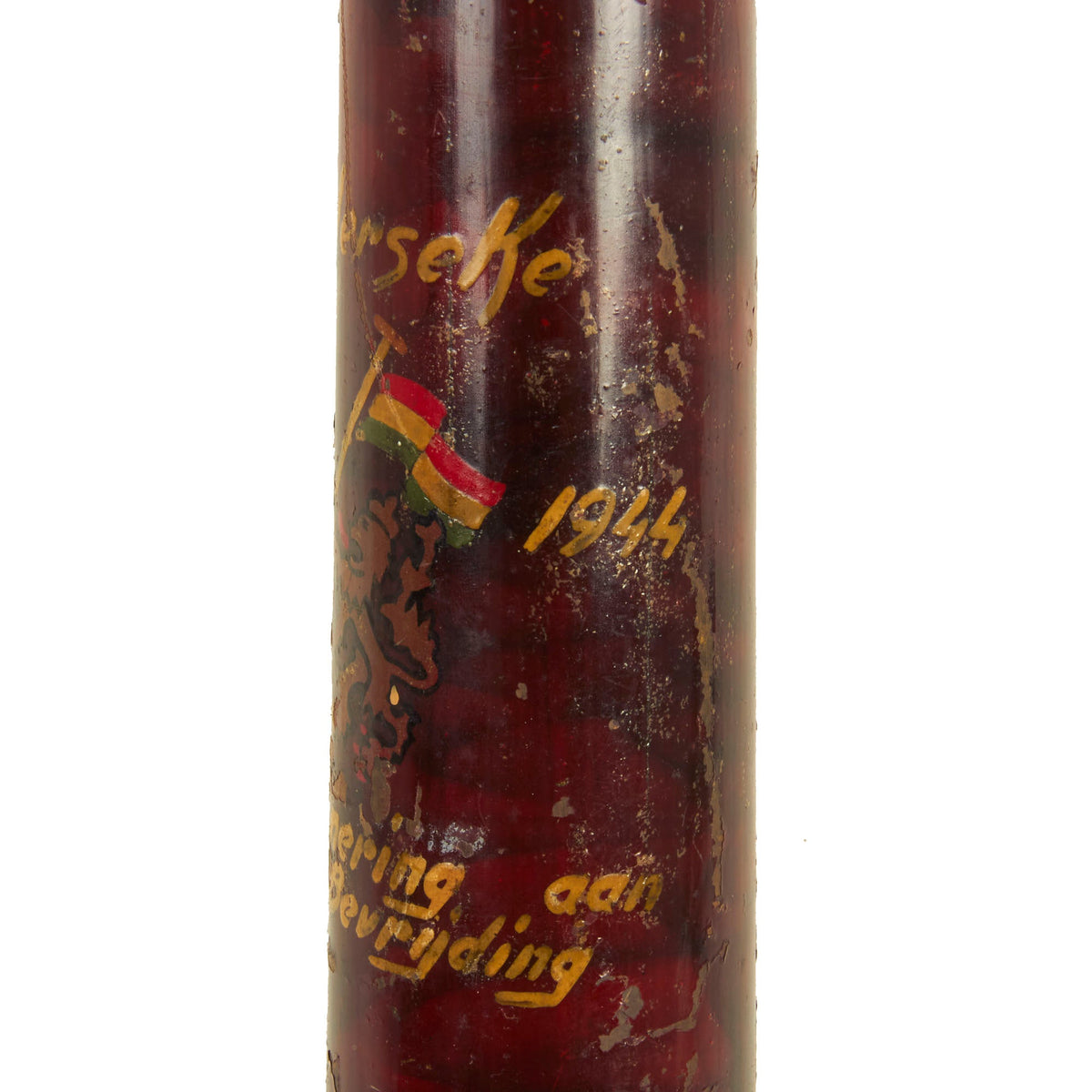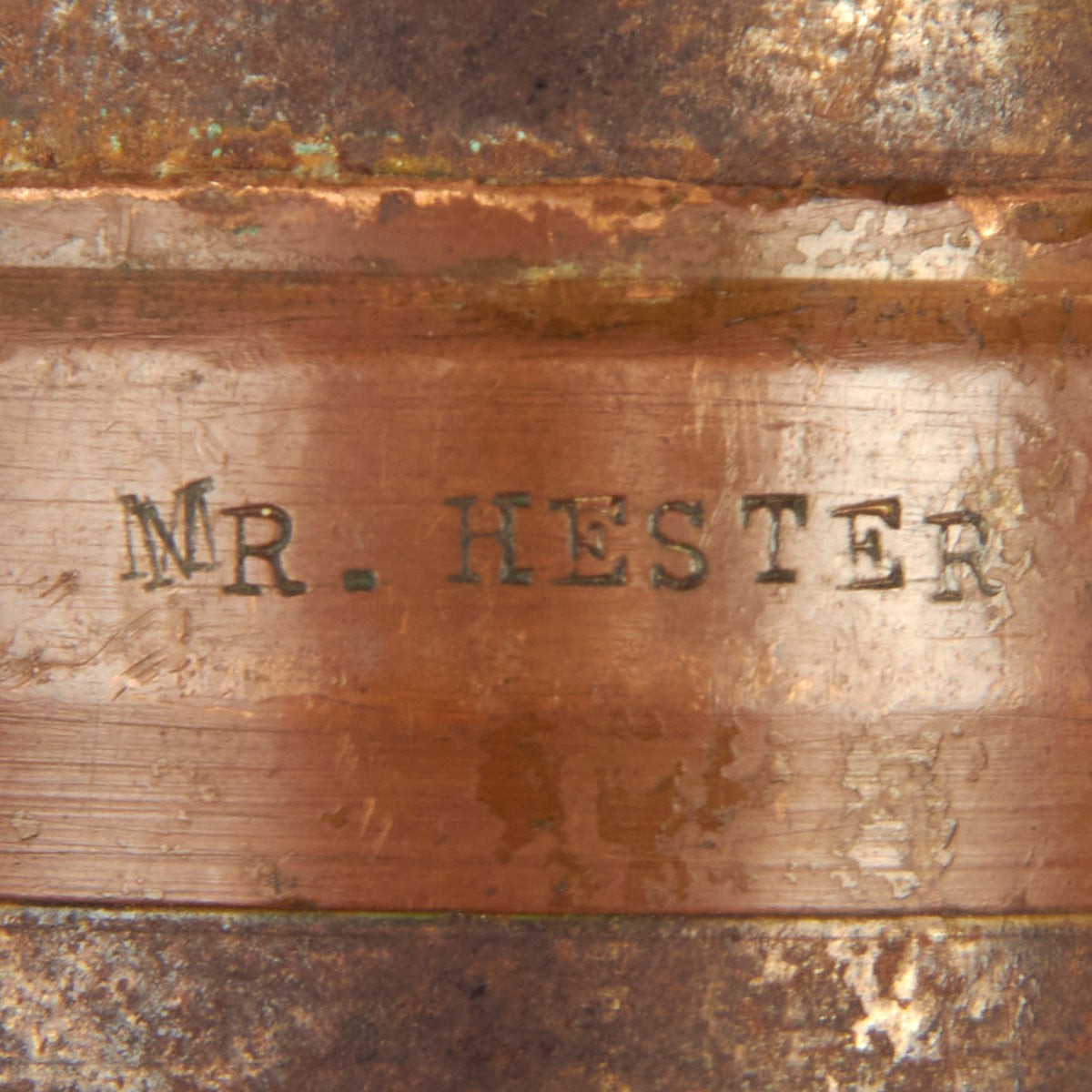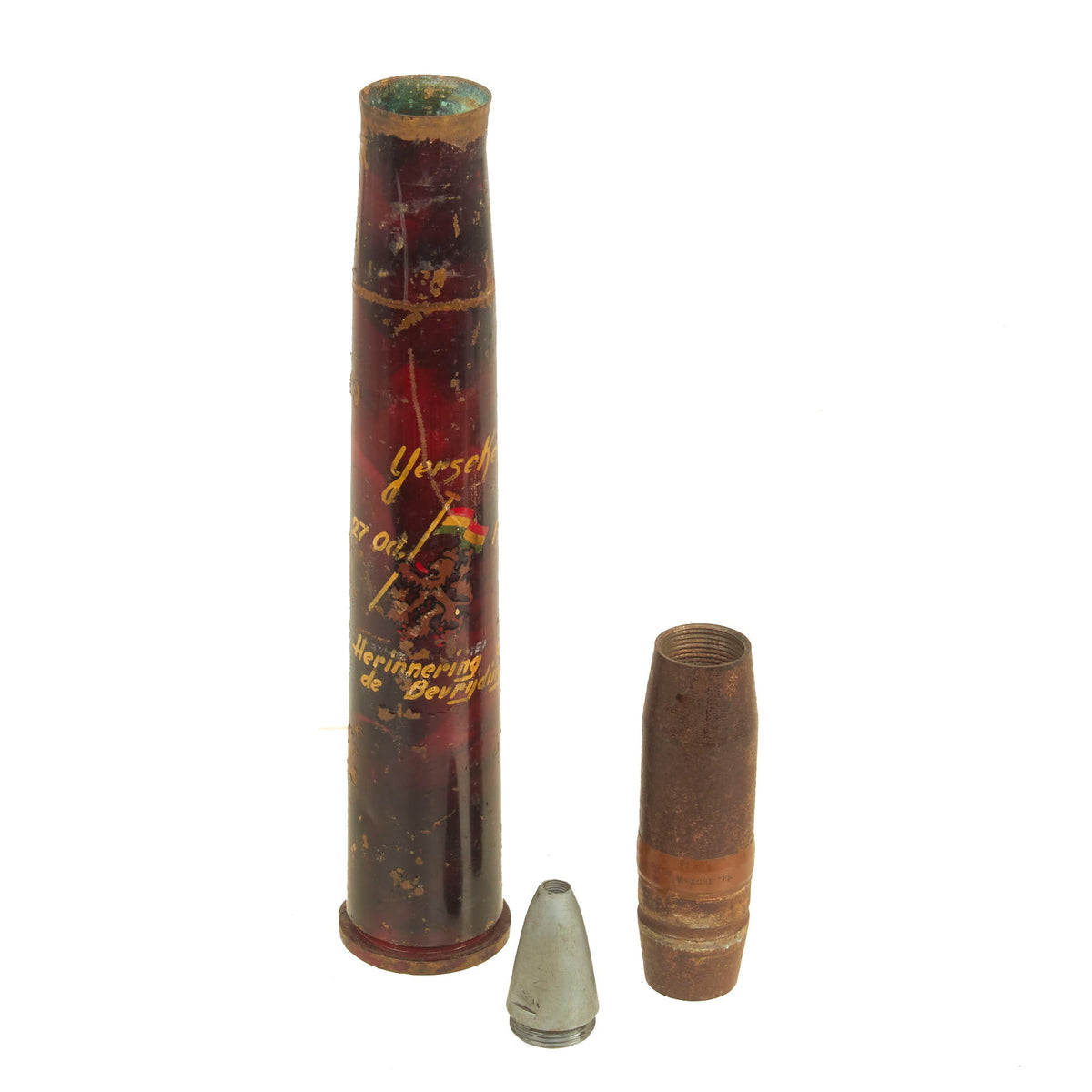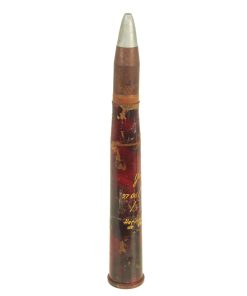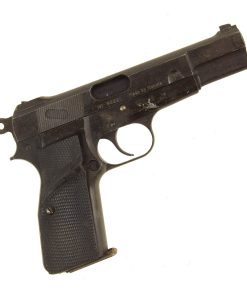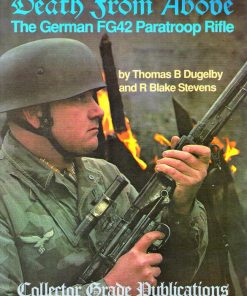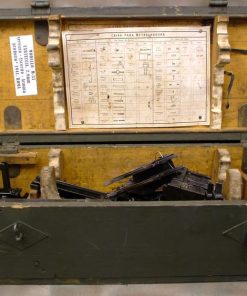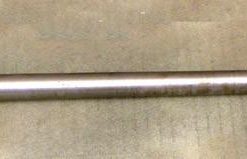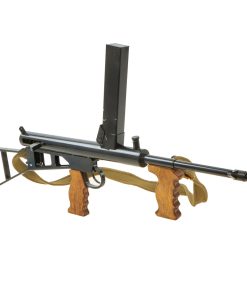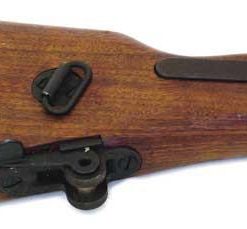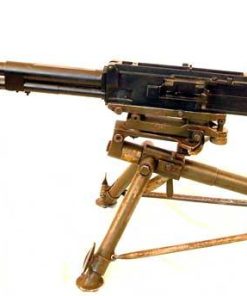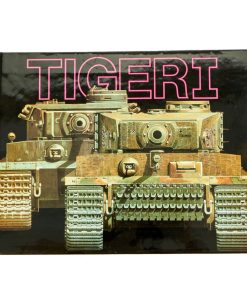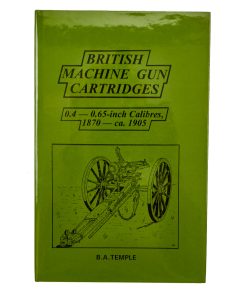Original Canadian WWII Inert 40mm Bofors Gun Round Hand Painted for “Herinnering aan de Bevrijding” Remembrance of the Liberation of Yerseke; October 27, 1944 Original Items
$ 250,00 $ 100,00
Original Item: Only One Available. Now this is a fantastic, personal memento from WWII. This 40mm Bofors round was painted for or by a “Mr. Hester” to celebrate the Liberation of Yerseke in 1944. The round is completely inert and void of any explosive content. It is in total compliance with the current BATF regulations governing the ownership of inert ordnance.
Not Available For Export
The Bofors 40 mm gun, often referred to simply as the Bofors gun, is an anti-aircraft autocannon designed in the 1930s by the Swedish arms manufacturer AB Bofors. It was one of the most popular medium-weight anti-aircraft systems during World War II, used by most of the western Allies as well some captured systems being used by the Axis powers. A small number of these weapons remain in service to this day, and saw action as late as the Persian Gulf War.
The shell casing is painted with beautiful, blended colors of black and red featuring a Rampant Lion holding a Dutch Flag. Painted on the casing is the following:
Yerseke
27 Oct. 1944
Herinnering aan
de Bevrijding
“Herinnering aan de Bevrijding” translates to “Remembrance of the Liberation”. During World War II the village suffered heavy damage. When NSDAP Germany invaded in May 1940, many villagers evacuated due to anticipated fighting along the defensive Zanddijk line, stretching from the village southwards towards Hansweert across Zuid-Beveland. French naval bombardment from the Western Scheldt of German positions along the defensive line and Canal through Zuid-Beveland resulted in severe damage to the town. The main church was, along with much of the town center, almost entirely ruined. Besides the church, twenty-five structures were completely destroyed while an additional 36 received heavy damage, causing seventy families to become homeless. Although the village was liberated by Canadian forces in 1944, NSDAP V-1 rockets struck the village in March 1945. During the occupation, men from the village were taken to Germany as forced laborers for German industry.
The paint is retained quite well but there is loss and scratches scattered throughout the body.
A great example ready for further research and display.
Fast Shipping with Professional Packaging
Thanks to our longstanding association with UPS FedEx DHL, and other major international carriers, we are able to provide a range of shipping options. Our warehouse staff is expertly trained and will wrap your products according to our exact and precise specifications. Prior to shipping, your goods will be thoroughly examined and securely secured. We ship to thousands clients each day across multiple countries. This shows how we're dedicated to be the largest retailer on the internet. Warehouses and distribution centres can be located throughout Europe as well as the USA.
Note: Orders with more than one item will be assigned a processing date depending on the item.
Before shipping before shipping, we'll conduct a thorough inspection of the items you have ordered. Today, the majority of orders will be delivered within 48 hours. The delivery time will be between 3-7 days.
Returns
The stock is dynamic and we cannot completely manage it because multiple stakeholders are involved, including our factory and warehouse. So the actual stock may alter at any time. It's possible that you may not receive your order once the order has been made.
Our policy is valid for a period of 30 days. If you don't receive the product within 30 days, we are not able to issue a refund or an exchange.
You can only return an item if it is unused and in the same state as the day you received it. You must have the item in its original packaging.
Related products
Uncategorized
Angolan Rebel 1970s era 60mm Inert Display Mortar from Angolan Civil War Original Items
Uncategorized
Uncategorized
Uncategorized
Uncategorized
Australian WWII Owen MK1 Machine Carbine SMG Custom Fabricated Replica with Sling Original Items
Uncategorized
Uncategorized
Uncategorized
Uncategorized
Uncategorized
Uncategorized
Uncategorized
Uncategorized
Uncategorized
